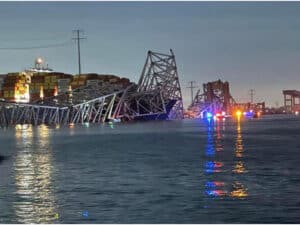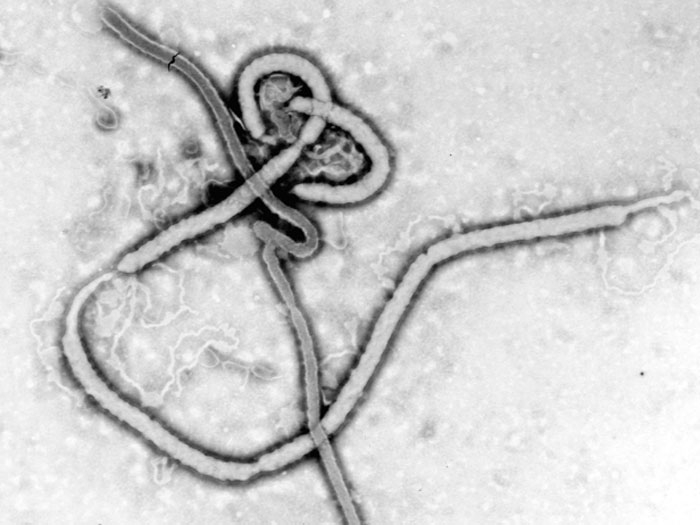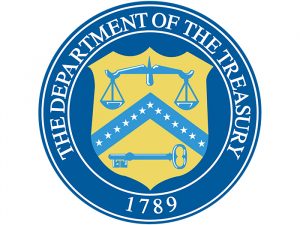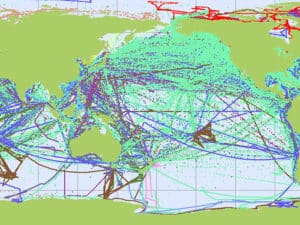
Ship operators told to take Ebola outbreak precautions
Written by Nick Blenkey
AUGUST 8, 2014 — The U.S. Coast Guard yesterday issued a Marine Safety Information Bulletin on Ebola virus precautions. It reminds vessel representatives that reports to the Center for Disease Control and Prevention (CDC) are required regarding sick or deceased crew or passengers and that the Coast Guard will be checking all Advance Notices of Arrival (ANOA) to determine whether a vessel has visited a country impacted by the Ebola virus outbreak within the previous five port calls. Masters should inform Coast Guard boarding teams of any ill crew members or passengers on board.
The World Health Organization (WHO) has issued an update on the current Ebola outbreak that contains specific recommendations for ships. The Marshall Islands has issued the same recommendations. They say that in the event of a passenger or seafarer presenting symptoms compatible with Ebola Virus Disease (EVD) (fever, weakness, muscle pain, headache, sore throat, vomiting, diarrhea, bleeding) on board a vessel, the following precautions should be applied:
Keep his/her cabin doors closed, if not placed in an medical isolation room on board.
Provide information about the risk of Ebola transmission to persons who will take care of the patient or enter the isolation area.
A log listing all people entering the cabin should be maintained.
Anyone who enters the cabin to provide care to the person in isolation or to clean the cabin must wear PPE with :
A surgical protection mask; and eye protection or a face shield
Non-sterile examination gloves or surgical gloves;
Disposable impermeable gown to cover clothing and exposed skin. A waterproof apron should be worn over a non-impermeable gown or when coming in close contact with the person in isolation
Before exiting the isolation the PPE should be removed in such a way as to avoid contact with the soiled items and any area of the face.
Limit the movement and transport of the patient from the cabin for essential purposes only. If transport is necessary, the patient should wear a surgical mask.
Clean and disinfect spills without spraying or creating aerosol. Used linen, cloths, eating utensils laundry and any other item in contact with a patient’s body fluids should be collected separately and disinfected in such a way as to avoid any creation of aerosol or any contact with persons or contamination of the environment. Effective disinfectant is a dilution of sodium hypochlorite at 0.05 or 500 ppm available chlorine, with a recommended contact time of 30 minutes.
All waste produced in the isolation cabin must be handled according to the protocol of the ship for clinical waste. If incinerator is available on board, then waste must be incinerated. If waste must be delivered ashore, then special precautions are needed and the port authority should be informed before waste delivery.
Start case investigation immediately. Protective equipment is not required when interviewing asymptomatic individuals, when a distance of one meter is maintained.
Close contacts should be identified and asked to do passive self-monitoring of temperature (e.g. monitoring temperature only if feeling feverish) and symptoms or active self-monitoring (e.g. by regular temperature measurement twice a day and for 21 days.
In the event of a suspected diagnosis of EVD on a ship, immediate expert medical opinion should be sought and the event must be reported as soon as possible to the next port of call by the Captain.
The patient should disembark in such a way as to avoid any contact with healthy travellers and wearing a surgical mask. Personnel in contact with the patient during the medical evacuation should wear a surgical protection mask and PPE.
The competent authority at port may need to arrange depending on the situation: medical evacuation or special arrangements for disembarkation and hospitalization of the patient and laboratory diagnosis.
Passengers, crew members and cleaning staff who have been identified through contact tracing should be assessed for their specific level of exposure. Passive self-monitoring of temperature (e.g. monitoring temperature only if feeling feverish) and symptoms or active self-monitoring (e.g. by regular temperature measurement twice a day) for those at higher risk level should be continued for 21 days.
At the request of a governmental port health authority, ship operators shall also facilitate obtaining, from some or all passengers, to provide information on their itinerary and their contact details (should they need to be contacted) when there is a particular reason to believe they may have been exposed to infection on board of the ship. Additionally, countries may consider requiring arriving ships to complete and deliver the Maritime Declaration of Health (IHR Annex 8). Measures taken on board should also be noted on the IHR Ship sanitation control certificate (IHR Annex 3)
U.S. Coast Guard Marine Safety Information Bulletin
http://www.uscg.mil/msib/docs/012_14_8-7-2014.pdf
WHO recommendations
http://www.who.int/ith/updates/20140421/en/
Marshall Islands advisory
https://www.register-iri.com/forms/upload/MSAdvisory_45-14_Revised.pdf#search=ebola
UK P&I Club update
http://www.ukpandi.com/loss-prevention/current-claims-ebola-virus/





Leave a Reply
You must be logged in to post a comment.